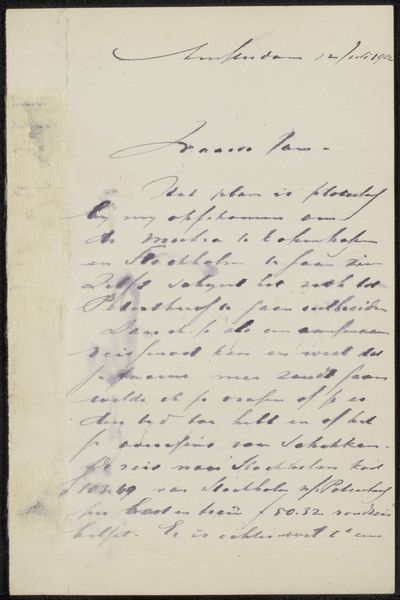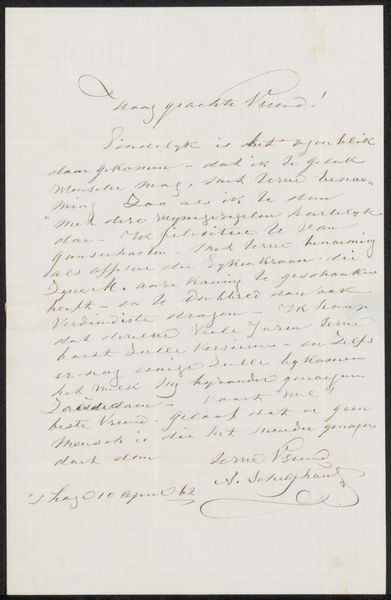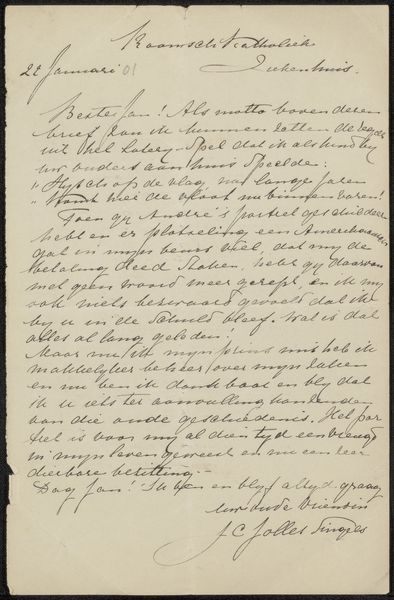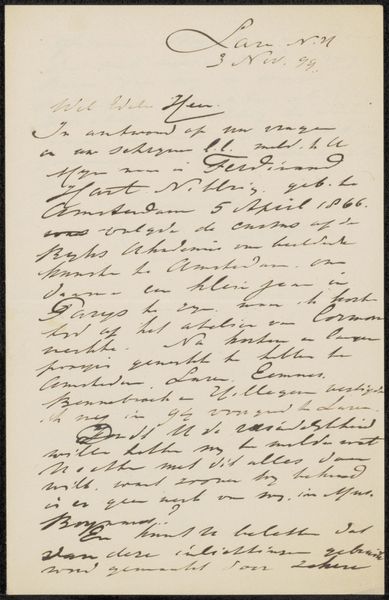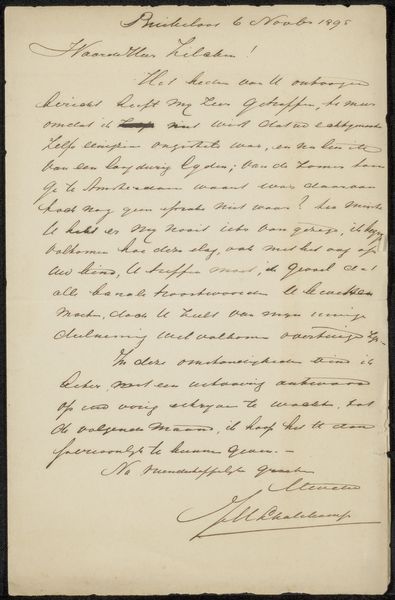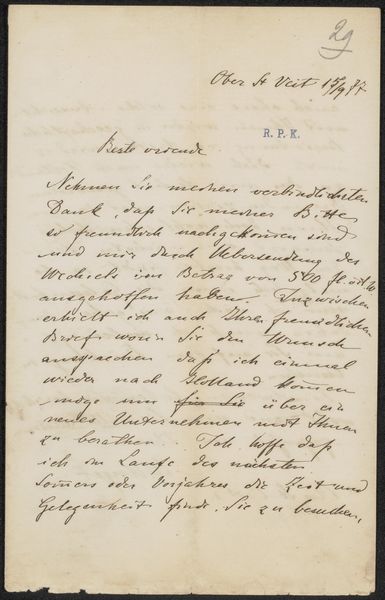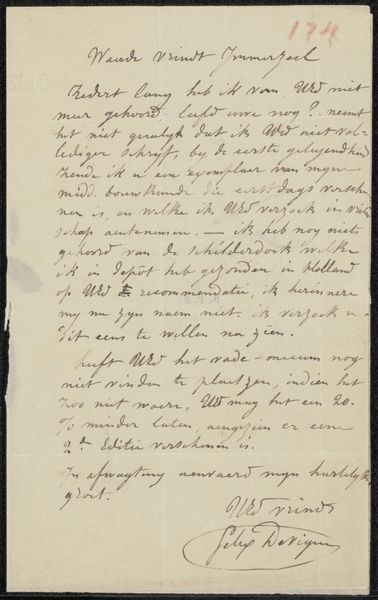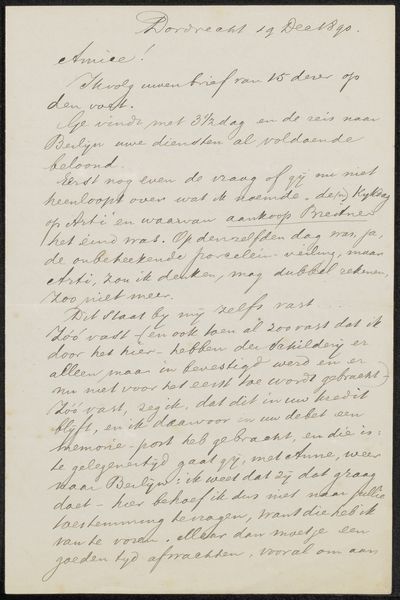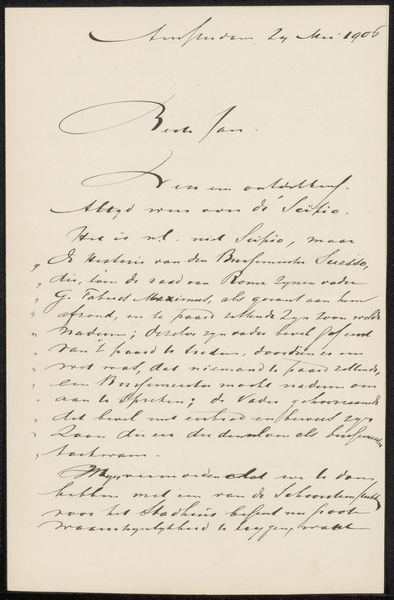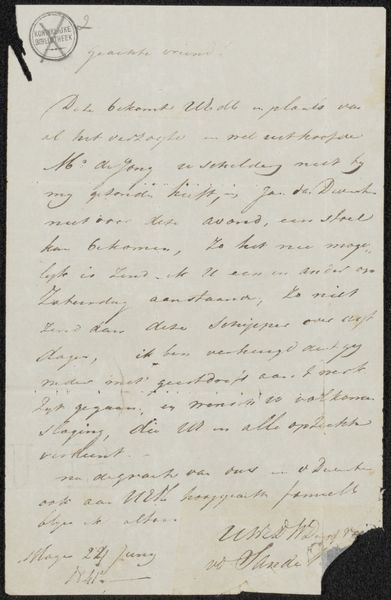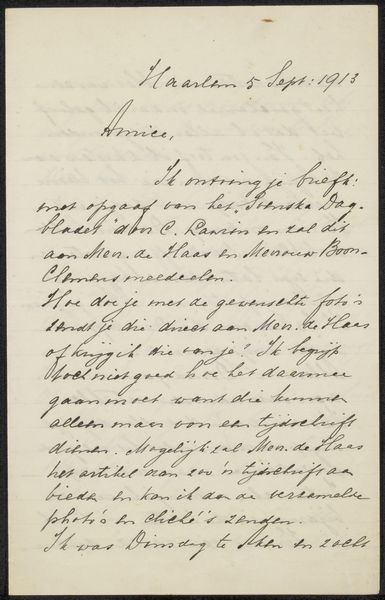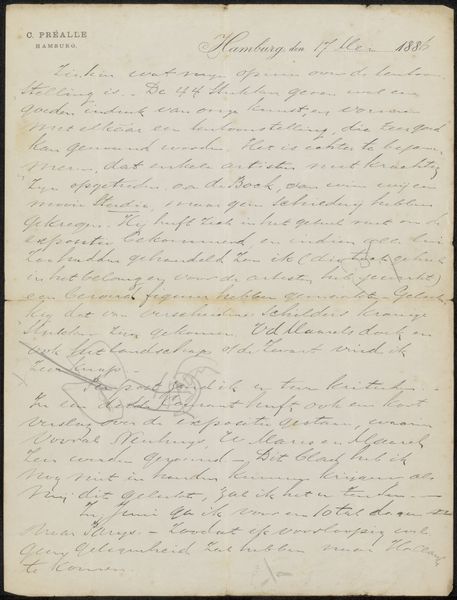
drawing, paper, ink, pen
#
drawing
#
hand-lettering
#
hand drawn type
#
hand lettering
#
paper
#
personal sketchbook
#
ink
#
hand-drawn typeface
#
pen-ink sketch
#
ink colored
#
pen work
#
sketchbook drawing
#
pen
#
sketchbook art
Copyright: Rijks Museum: Open Domain
Editor: Here we have Cornelis Gerardus 't Hooft's "Brief aan Jan Veth," likely created between 1910 and 1914. It's a drawing, with ink on paper, showcasing delicate, handwritten script. The visual texture gives me a strong sense of intimacy. What do you see in this piece? Curator: The visual texture *is* quite intimate, isn't it? What strikes me most is how this letter operates as a testament to intellectual exchange within a specific cultural and historical context. Think about the power dynamics inherent in correspondence of this era. Who had the access and education to write and receive such letters? How did networks of communication shape artistic movements and cultural discourse? Editor: So, it's not just about the letter's content, but also about its role in a larger societal network? Curator: Exactly! We can examine the letter’s composition, its formal aspects, through a feminist lens, asking who is being included, whose voices are amplified, and whose are silenced. What assumptions about gender, class, and artistic authority are embedded in this seemingly simple communication? Also, notice how handwriting itself, the "hand-drawn typeface" if you will, acts as a declaration of one’s humanity. Editor: I never thought of handwriting as a statement, but it definitely makes sense in a time where printed communication was becoming more common. How might this inform the content of the letter itself? Curator: That's the crucial question! Perhaps 't Hooft strategically uses handwriting to emphasize a sense of personal connection. So, consider the power of ink as a form of material and ideological inscription. We’re literally seeing thought given form. This piece prompts a powerful intersectional examination into the sociopolitical world of art. Editor: That gives me a whole new perspective on this artwork and handwritten correspondence of this era! Thank you for the insightful considerations. Curator: My pleasure. It’s in asking these questions that we truly uncover the complexity and resonance of art!
Comments
No comments
Be the first to comment and join the conversation on the ultimate creative platform.
